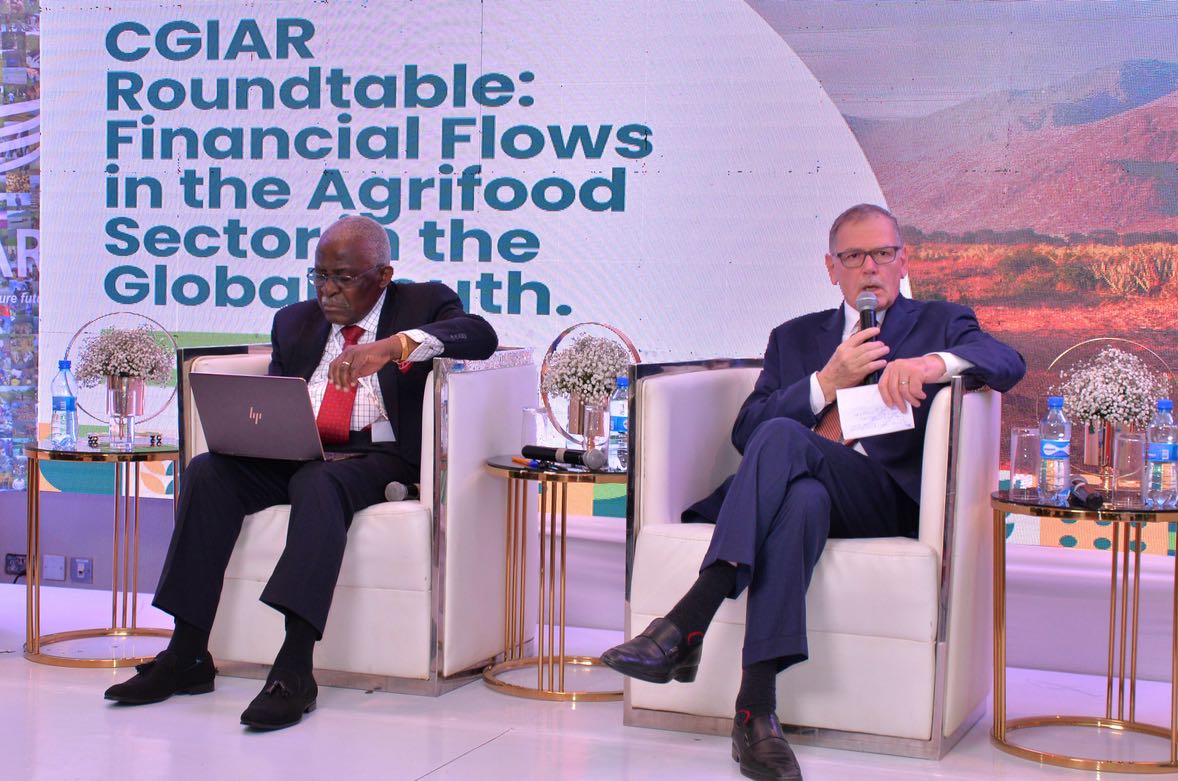Agrifood Systems as Part of the Solution: Spotlight Conversations on Agriculture Innovation
- From
-
Published on
30.01.23

Are we investing enough to end hunger by 2030, the date set for its termination by the UN’s Agenda for Sustainable Development? This was the central question in a round table discussion on Financial Flows in the Agrifood Sector in the Global South, a joint production of CGIAR and The Economist held on December 6, 2022, in Nairobi, Kenya.
Although 800 million people are going hungry each day, there is a funding gap of $15.2 billion annually to the agrifood sector. “The vital question in this context becomes: how do we close the gap between what is invested today and what needs to be invested in order to end hunger?” said Marco Ferroni, former Chair of the CGIAR System Board.
The event’s main goal was to understand how to scale innovation and the drivers of financial flows in agrifood systems in the face of climate change pressures.
As keynote speaker, Josphat Gathiru Muhunyu, Agriculture Secretary of the State Department for Crop Development and Agricultural Research at the Kenya Ministry of Agriculture, Livestock, Fisheries and Cooperative, emphasized, “climate change has evolved from an environmental problem to a major development challenge, impacting all economic sectors.” Highlighting opportunities for climate adaptation, the discussion advocated greater funding for the sector and more partnerships to co-create and co-own solutions.
Innovations in Climate Adaptation
The first half of the event focused on emerging technology for climate adaptation and what is needed to deliver these innovations to those most impacted by climate change—namely, smallholder farmers. The discussion focused on water management, nutrition and health innovation, and on innovations emerging out of the African continent.
Aditi Mukherji, CGIAR Director of the Climate Change Impact Area Platform, and Roberto Lenton, Professor Emeritus at the University of Nebraska, focused on innovations in water management. Smallholder farmers are perhaps the most vulnerable group to climate change as they depend on rainfall and weather patterns for their livelihoods. Increasing rainfall variability reinforces the need for better management of water.
Both emphasized the need for innovations to not only focus on technology but to encompass the whole of the value chain—from innovation to the policies and institutions that support the dissemination of such technology. Lenton gave the example of Mukherji’s research on policies and incentives that enable larger-scale farmers to share water with smallholder farmers as critical research to ensure that innovations reach all.
Innovations in nutrition and health need to become more nuanced to fight micronutrient deficiencies and improve nutrition outcomes. Shakuntala Thilsted, CGIAR Director of the Nutrition, Health and Food Security Impact Area Platform and recipient of the 2021 World Food prize, emphasized that nutrition-sensitive innovations are ready-to-scale, such as nutrient-dense vegetables. What is needed now, she said, is targeted policies to scale. She gave the example of India’s efforts to adopt fish and aquatic food evidence-based policies to solve malnutrition in vulnerable populations by engaging communities at all levels, including village counsels and women and children’s centers.
Nomindelger Bayasgalanbat, Senior Technical Specialist of Social Inclusion—Nutrition at the International Fund for Agricultural Development (IFAD) Regional Office for East and Southern Africa, argued for bio-fortified crops as a cost-effective option for combatting micronutrition deficiencies. She explained how IFAD focused on the sustainability of these crops by encouraging the “pass-on” approach—encouraging farmers to pass seeds and knowledge to other community members. Bayasgalanbat advocated for evidence-based investments in nutrition outcomes through greater collaboration with financial institutions to scale up innovations with the private sector as a systematic partner.
The conversation then moved to the African continent, where the recently signed Abidjan II communiqué aims to build Africa’s resilience to future shocks by bolstering agricultural innovation systems and aligning institutional structures and funding.
Harold Roy-Macauley, Managing Director of Regions and Partnership at CGIAR and Director General of the Africa Rice Center, spoke of the excitement of this new initiative—how the partnership of development banks, institutions, and research and innovation institutes will work to scale out innovations and mobilize appropriate resources. He also spoke of the possibility of greater South-South cooperation by having other entities join the partnership using the key elements of strong political dialogue and financial cooperation to allow countries and people to work together.
Ferroni summarized the roundtable discussion around six points:
- The need for greater integration of science and innovation to mimic how agrifood systems operate;
- Better financing options by positioning agriculture as part of the solution to climate change and food insecurity;
- Solving challenges through a bundled systems approach including policy and institutional change and science;
- Transforming systems through a holistic approach rather than context-specific solutions;
- Seeing the climate crisis as a water crisis and focusing on innovations in that realm to transform the whole agrifood system;
- The future is in our hands and we have the solutions and the tools to make it brighter.
Ferroni also reflected on his years as CGIAR System Board Chair and expressed his optimism that we can still solve humanity’s greatest challenges through stronger multilateral cooperation, funding and innovations.
You can read more on the day’s events, including The Economist Roundtable Discussion, here.
Read the Economist Report on Ending hunger by 2030: are we investing enough? – Economist Impact
Header photo by CGIAR.
